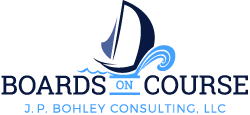Tip #19 Identify and Communicate with your Organization's Key Stakeholders
A critical job of a board of directors is to identify and communicate with those key people on whose behalf the board governs and to whom it is accountable.
Policy Governance® refers to those key people as owners. Other terms used by governance writers include key stakeholders and constituents. They are the people who provide legitimacy to the board’s authority and serve as “the source for the organization’s purpose and values.” (British Standards Institution, Code of Practice for Delivering Effective Governance of Organizations, 2013) Boards of directors may also be referred to as boards of trustees. But who are such boards entrusted to govern for? While boards may see themselves as trustees, it is not unusual that they haven’t developed clarity about whom they are trustees for, about whom they are representing in making decisions about the organizations they govern.
Let’s try to become a little clearer about the idea of “owners” by differentiating them from “stakeholders” and “customers”. “Owners” are a smaller category within the larger group of “stakeholders”. While “stakeholders” refers to all people who have a “stake” in the organization (owners, employees, customers, vendors, etc.), “owners” refers to those key stakeholders who are the shareholders of a publicly traded company or who are related to the organization in a position equivalent to that of a shareholder or investor. It is also important to differentiate “owners” from “customers.” Owners are concerned about the direction and well-being of the whole organization while customers are concerned about what service or benefit they are receiving. If you are a customer of Apple Computers and also own shares in Apple Computers you have different concerns as an Apple Computers customer and as an Apple Computers shareholder. Similarly you have different concerns with respect to your local school if you are a student or parent (customer) or if you are a resident and taxpayer (owner). Of course, individuals can be both owner and customer but the owner perspective and the customer perspective are different. In particular situations, it is important to be clear about which hat an individual is wearing and whether owner or customer issues are being dealt with.
According to Policy Governance®, owners can be divided into two categories: legal owners to whom the board has a legal obligation (owners of a privately held company, shareholders, owners specified in an organization’s bylaws, owners with the authority to hire and fire board members), and moral owners to whom the board has a moral obligation. Moral owners can also be referred to as virtual owners. The British Standards Institution (BSI) refers to legal and moral owners as formal and informal stakeholders.
While the concept of “ownership” is foundational to the Policy Governance® system, it is important for all boards, whether they embrace Policy Governance® or not, to be very clear about those people who are the source of their authority and legitimacy, those people on whose behalf they govern and to whom they are accountable, and to engage in ongoing dialogue with them.
In the next two Tips for Effective Boards, we’ll continue this discussion by focusing on identifying who your organization’s owners are and how to engage in an ongoing conversation with them.
For more information about the Policy Governance® system, please go to www.BoardsOnCourse.com/policy-governance.
